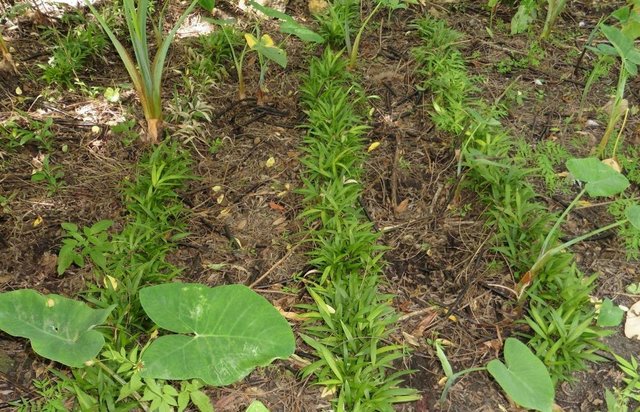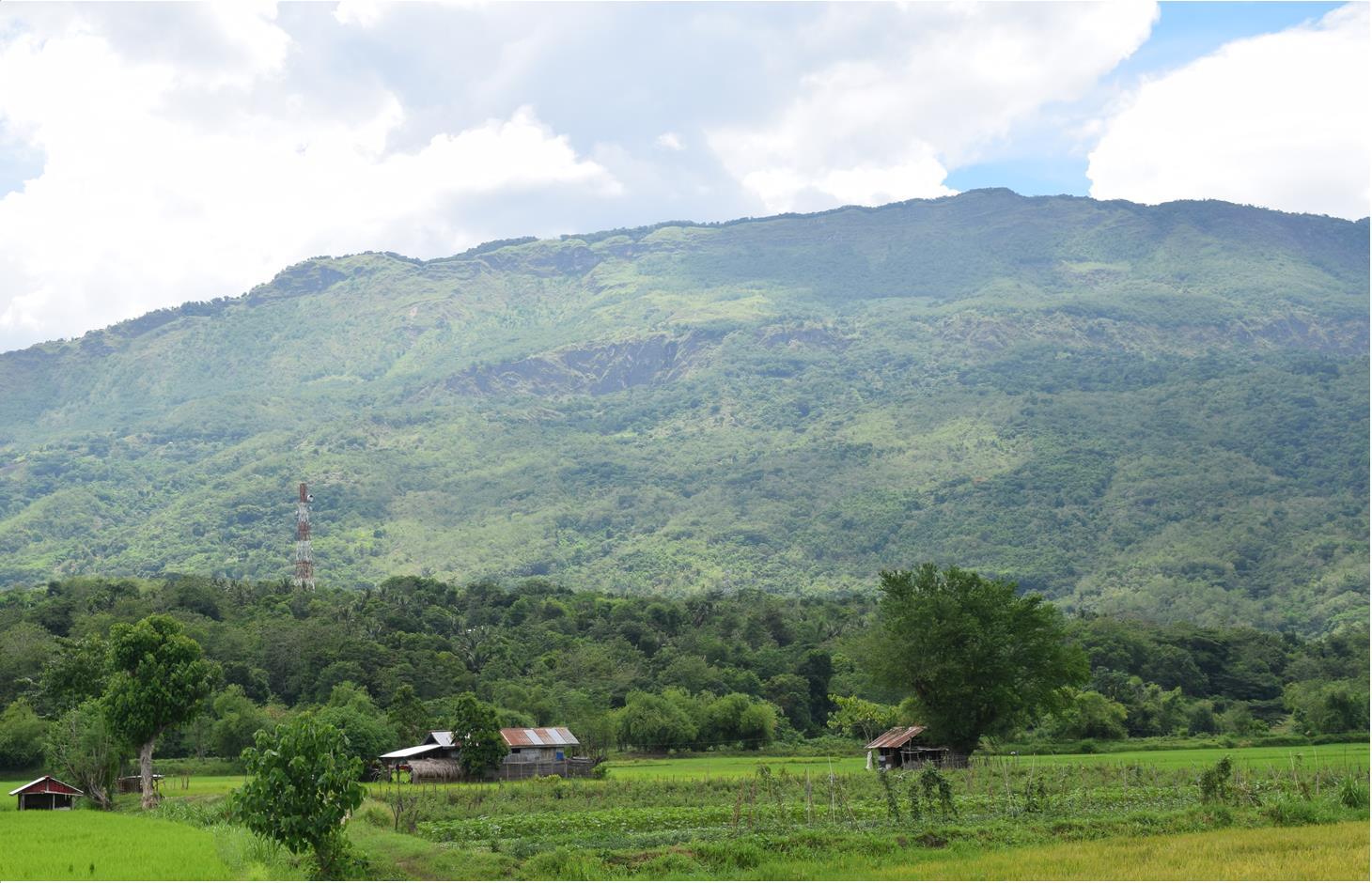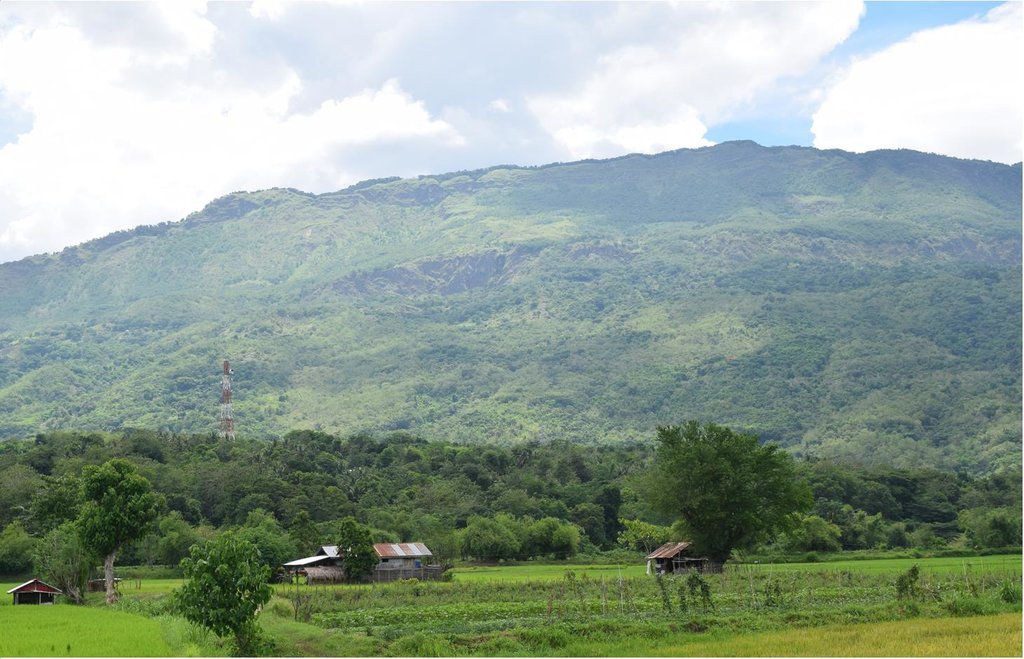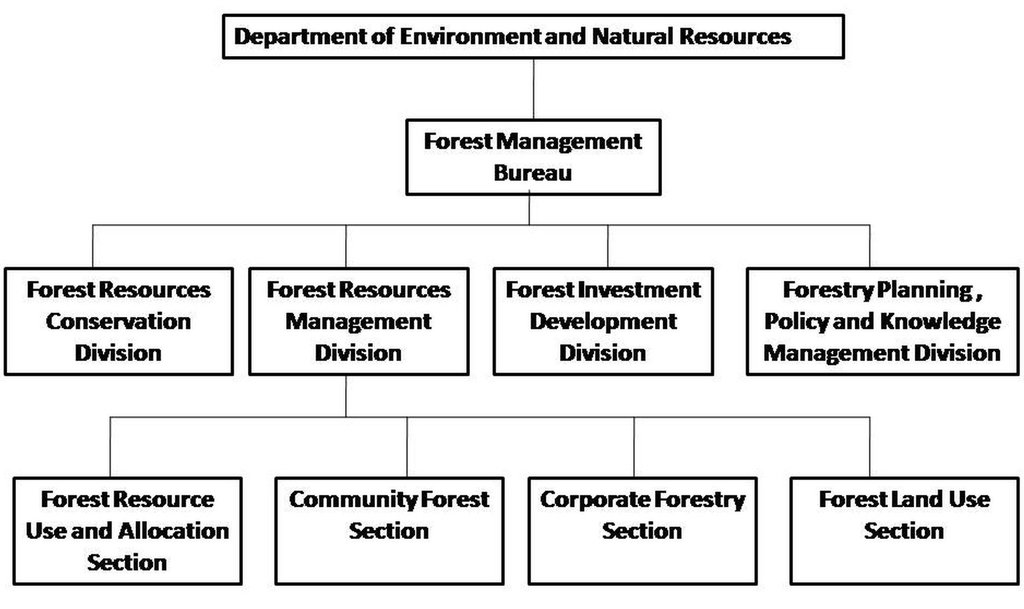Community-Based Forest Management [Филиппины]
- Создание:
- Обновить:
- Составитель: Isabelita Austria
- Редактор: –
- Рецензент: Deborah Niggli
Community Forestry, Social Forestry
approaches_1956 - Филиппины
Просмотреть разделы
Развернуть все Свернуть все1. Общая информация
1.2 Контактные данные специалистов и организаций, участвующих в описании и оценке Подхода
Специалист по УЗП:
Dacumos Evangeline
Bureau of Soils and Water Management-Soil Conservation and Management Division
Филиппины
Специалист по УЗП:
Dinamling Djolly Ma.
Bureau of Soils and Water Management-Soil Conservation and Management Division
Филиппины
Название проекта, содействовавшего документированию/оценке Подхода (если применимо)
Decision Support for Mainstreaming and Scaling out Sustainable Land Management (GEF-FAO / DS-SLM)Название организации (-ий), содействовавших документированию/оценке Подхода (если применимо)
Department of Agriculture-Region VIII (DA-8) - Филиппины1.3 Условия, регламентирующие использование собранных ВОКАТ данных
Когда были собраны данные (на местах)?
21/07/2015
Составитель и ответственный/-ые специалист(-ы) согласны с условиями, регламентирующими использование собранных ВОКАТ данных:
Да
1.4 Ссылка (-и) на Анкету (-ы) по Технологиям УЗП

Littuko Growing for Forest Enhancement [Филиппины]
Growing of rattan is done by upland farmers as part of the Community-Based Forest Management (CBFM).
- Составитель: Philippine Overview of Conservation Approaches and Technologies
2. Описание Подхода УЗП
2.1 Краткое описание Подхода
Community-Based Forest Management (CBFM) refers to the organized efforts to work with communities in and near public forestlands with the intent to protect, rehabilitate, manage, conserve, and utilize the resources in partnership with the Local Government Units (LGUs) and other stakeholders.
2.2 Подробное описание Подхода
Подробное описание Подхода:
The objectives of the CBFM are the following: to develop, protect, conserve and utilize forest lands through sustainable forest management practices; to generate additional income for forest communities towards poverty reduction and hunger mitigation in the uplands; to promote equity through the provision of long term land tenure security and access to forest resources through issuance of CBFM agreements and certificate of stewardship; and to enhance the capacity of CBFM agreement holders as climate-resilient forest land resources managers.
The methods involved in the approach include agroforestry, plantation establishment, enrichment planting ,forest protection and conservation of existing forests. Agroforestry is the combination of forest trees, fruit trees and annual crops including livestock in the same piece of land. Plantation establishment is growing of forest trees in degraded grassland areas. Part of the enrichment planting is growing of rattan 'littuko', fruit trees, and indigenous species (dipterocarp,etc) along with existing trees in the area to improve forest cover and species diversification.
The project of CBFM in Nueva Vizcaya was initiated in 1998 and ended in 2002.The stages of implementation started with the preparatory stage, then the People's Organization formation and issuance of tenure instrument. It was followed by the planning stage, implementation stage then the monitoring, assessment and reporting stage.
The stakeholders in the approach are the Department of Environment and Natural Resources (DENR), Community or the People's Organization (PO), Local Government Unit (LGU), Non-government organizations, other government agencies, academe, private sector and donor institution. DENR provided the funding support in the implementation of CBFM, twenty five(25) years security of tenure renewable for another 25 years to qualified organization of forest occupant in the management of forestlands thru CBFM agreement, provision of technical assistance, formulation of guidelines, monitoring and evaluation. The POs serve as managers of the forestlands allocated to them through CBFM agreement. They are responsible in the development, protection, and maintenance of the area. The LGU provides support to communities in the implementation of CBFM within its jurisdiction.
2.3 Фотографии, иллюстрирующие Подход
2.5 Страна/ регион/ место, где применялся Подход
Страна:
Филиппины
Административная единица (Район/Область):
Bayombong
Map
×2.6 Даты начала и окончания реализации Подхода
Год начала реализации:
1998
Если год начала реализации Подхода достоверно неизвестен, дайте примерную оценку:
10-50 лет назад
Год окончания (Если Подход больше не применяется):
2002
2.7 Тип Подхода
- в рамках проекта/ программы
2.8 Каковы цели/ задачи Подхода
The main objectives of the approach focused on the economic, social and environmental aspect to increase income and standard of living, to develop the capacity of the communities to sustain and manage the forestlands and resources, to promote social justice through security of tenure, use rights, and to reclaim or rehabilitate degraded lands and sustain its productivity.
2.9 Условия содействующие применению Технологии/ Технологий в рамках Подхода или затрудняющие его
Социальные/ культурные/ религиозные нормы и ценности
- содействуют
The three farmers associations were organized into Federation of Vista Hills, Kalongkong and Kakilingan Upland Farmers, Inc., using CBFM as entry point.
Наличие/ доступность финансовых ресурсов и услуг
- содействуют
The International Tropical Timber Organization (ITT0) provided financial support for plantation establishment experiment and for developing the area through CBFM.
Институциональные условия
- содействуют
The Buenavista Upland Development Advisory Council, with representatives from DENR, Community, DA, LGU, Academe, NCIP, and DPWH was organized to provide assistance in the implementation of CBFM in Buenavista, Bayombong, Nueva Vizcaya.
Нормативно-правовая база (землевладение, права на земле- и водопользование)
- содействуют
Through CBFM, the Federation of Vista Hills, Kalongkong and Kakilingan was awarded with CBFM Agreement to manage the area for 25 years, renewable for another 25 years .
Осведомленность в области УЗП, доступность технической поддержки
- содействуют
Through CBFM, training and technical support were provided by DENR and other service providers.
Объем работ, доступность рабочей силы
- содействуют
It became holistic through the Federation under CBFM.
другие
- содействуют
Through people's participation, the Federation was able to reduce or control occurence of forest fires in the area.
3. Участие и распределение ролей заинтересованных сторон
3.1 Заинтересованные стороны, участвующие в реализации Подхода и их роли
- местные землепользователи/ местные сообщества
Communities living within and near forests dependent on the resources for livelihood including indigenous people
- эксперты по УЗП/ сельскому хозяйству
Department of Environment and Natural Resources
- ученые-исследователи
Nueva Vizcaya State University
3.2 Участие местных землепользователей/ местных сообществ на разных стадиях реализации Подхода
| Участие местных землепользователей/ местных сообществ | Перечислите участников и опишите их вовлеченность | |
|---|---|---|
| инициирование/ мотивация | интерактивное | Community Organizing Training, Orientation about CBFM, Community Mapping |
| планирование | интерактивное | Agroforestry and Farm Planning, Planning and Management of Community Enterprise, Formulation and Preparation of Community Resources Management Framework (CRMF), Farm Planning and Agroforestry Development |
| выполнение | интерактивное | Livelihood training such as dressmaking, fossilized flower, agroforestry and soil and water conservation (SWC) technologies |
| мониторинг/ оценка | интерактивное | Environmental Performance Monitoring, Project Development and Management, Project Accounting and Reporting System |
| research | интерактивное |
3.3 Схема реализации (если имеется)
Описание:
Organizational structure of the Forest Management Bureau at the National Level Showing the location of the community forestry section where CBFM is the major concern (DENR-FMB)
Автор:
For. Isabelita V. Austria (DENR-Forest Management Bureau)
3.4 Принятие решений по выбору Технологии/ Технологий УЗП
Укажите, кто принимал решение по выбору применяемой Технологии/ Технологий:
- в основном землепользователи при поддержке специалистов по УЗП
Поясните:
The land users have traditional farming practices which were enhanced through technical assistance and training provided to them by SLM specialist.
Поясните на чём было основано принятие решений:
- личный опыт и мнения (незадокументированные)
4. Техническая поддержка, повышение компетенций и управление знаниями
4.1 Повышение компетенций/ обучение
Проводилось ли обучение землепользователей/ других заинтересованных лиц?
Да
Укажите, кто проходил обучение:
- землепользователи
- местный персонал/консультанты
Тип обучения:
- в ходе работы
- обмен опытом между фермерами
- опытные участки
Тип обучения:
- workshops
4.2 Консультационные услуги
Есть ли у землепользователей возможность получать консультации?
Да
Укажите, где именно оказываются консультационные услуги:
- на полях землепользователей
4.4 Мониторинг и оценка
Являются ли мониторинг и оценка частью Подхода?
Да
Если да, будет ли данный документ использоваться для мониторинга и оценки?
Нет
4.5 Научные исследования
Были ли научные исследования частью Подхода?
Да
Укажите темы исследований:
- экономика / маркетинг
- экология
- технология
Напишите подробнее и назовите тех, кто выполнял исследования:
Done by the Nueva Vizcaya State University (NVSU) and the DENR-ITTO CBFM Project, Doctorate students from Nepal and Myanmar and Masteral students from DENR.
5. Финансирование и внешняя материальная поддержка
5.1 Годовой бюджет мероприятий по УЗП в рамках Подхода
Если точный годовой бюжет неизвестен, укажите примерный диапазон затрат:
- 100 000-1 000 000
Комментарий (например, основные источники финансирования/ ключевые доноры):
ITTO-Yokado Co., Japan; Government of Japan; USA; Australia and Republic of Korea -> together 100%
5.2 Финансирование и внешняя материальная поддержка, предоставляемая землепользователям
Предоставлялась ли землепользователям финансовая/ материальная поддержка для применения Технологии /Технологий?
Да
Если да, укажите тип(-ы) поддержки, кто ее предоставил и условия предоставления:
Financial support during the initial stage of CBFM implementation
5.3 Субсидии на отдельные затраты (включая оплату труда)
- сельскохозяйственные
| Укажите, какие ресурсы были субсидированы | В какой степени | Опишите субсидии подробнее |
|---|---|---|
| seedlings | профинансированы частично | |
Если труд землепользователя был существенным вкладом, укажите, был ли этот вклад:
- добровольный
5.4 Кредитование
Предоставлялись ли в рамках Подхода кредиты на мероприятия УЗП?
Нет
5.5 Другие методы или инструменты стимулирования
Использовались ли другие методы или инструменты стимулирования для продвижения Технологий УЗП?
Нет
6. Анализ влияния и заключительные положения
6.1 Влияние Подхода
Сумел ли Подход расширить знания и возможности землепользователей в применении практик УЗП?
- Нет
- Да, немного
- Да, умеренно
- Да, существенно
Significant increase in forest cover through rehabilitation of grasslands to forest plantation. Enhanced natural regeneration through effective forest protection, enrichment planting of dipterocarp species,rattan, and multi-storey agroforestry development.
Сумел ли Подход расширить возможности социально и экономически уязвимых групп?
- Нет
- Да, немного
- Да, умеренно
- Да, существенно
They were made stewards of forestlands for 25 years,renewable for another 25 years. Also, they were granted use rights and more than 50% of the Peoples' Organization are with active registration and qualified to enter into livelihood development contract with the DENR thru National Greening Program(NGP) and CBFM-CARP.
Сумел ли Подход разрешить правовые проблемы землевладения/ землепользования, препятствующие использованию технологий УЗП?
- Нет
- Да, немного
- Да, умеренно
- Да, существенно
The security of tenure (CBFM Agreement) provides long-term (50 years) stewardship and resource use rights based on approved strategic plan.
Сумел ли Подход привести к созданию новых рабочих мест/ к расширению возможностей получения дохода?
- Нет
- Да, немного
- Да, умеренно
- Да, существенно
According to the study conducted by the DENR-Ecosystems Research and Development Bureau (ERDB), an increase in income of CBFM beneficiaries was realized.
Did other land users / projects adopt the Approach?
- Нет
- Да, немного
- Да, умеренно
- Да, существенно
There are 1,884 communities implementing the CBFM approach nationwide. In the case of Brgy. Buenavista, its neighboring barangay Busilac have started to adopt the CBFM approach.
Did the Approach help to alleviate poverty?
- Нет
- Да, немного
- Да, умеренно
- Да, существенно
Through income derived from wood, agroforestry products, employment or job generation.
6.2 Основные причины, побуждающие землепользователей внедрять УЗП
- рост продуктивности
- рост прибыли (доходности) и рентабельности
- экологическая сознательность
- традиции и верования, нравственные ценности
- community organizing and development
6.3 Долгосрочная устойчивость мероприятий в рамках Подхода
Могут ли землепользователи самостоятельно (без внешней поддержки) продолжать применение того, что было реализовано в рамках Подхода?
- да
Если да, опишите как:
The CBFM project at Barangay Buenavista, Bayombong, Nueva Vizcaya had financial support from the International Tropical Timber Organization (ITTO) and the DENR from 1998-2002.It was then turned-over to the Federation of Vista Hills, Kalongkong, and Kakilingan. Thereafter, the CBFM area has improved significantly in terms of forest cover, biodiversity and organizational capacity.The Federation is the manager of the forestland and its resources with the LGU and DENR providing monitoring technical support; minimal and limited financial assistance through the NGP and CBFM-CARP.
6.4 Сильные стороны/ преимущества Подхода
| Сильные стороны/ преимущества/ возможности по мнению землепользователей |
|---|
| Multi-benefits from multi-storey and agroforestry practices. |
| Indigenous Knowledge Systems and Practices (IKSP) of upland communities including indigenous people. |
| Сильные стороны/ преимущества/ возможности по мнению составителя или других ключевых специалистов |
|---|
| Secured tenure |
6.5 Слабые стороны/ недостатки Подхода и пути их преодоления
| Слабые стороны/ недостатки/ риски по мнению землепользователей | Возможные пути их преодоления/снижения? |
|---|---|
| Limited market access for CBFM products. | Develop market information systems to improve bargaining power of communities. Encourage value adding and primary processing. |
| Слабые стороны/ недостатки/ риски по мнению составителя или ответственных специалистов | Возможные пути их преодоления/снижения? |
|---|---|
| Poor financial management, record keeping by the POs, and members. | Enhance training of CBFM farmers in simple accounting,record keeping, and auditing. |
7. Справочные материалы и ссылки
7.1 Методы сбора/источники информации
- выезды на места, полевые обследования
- опросы землепользователей
Ссылки и модули
Развернуть все Свернуть всеСсылки

Littuko Growing for Forest Enhancement [Филиппины]
Growing of rattan is done by upland farmers as part of the Community-Based Forest Management (CBFM).
- Составитель: Philippine Overview of Conservation Approaches and Technologies
Модули
Нет модулей





